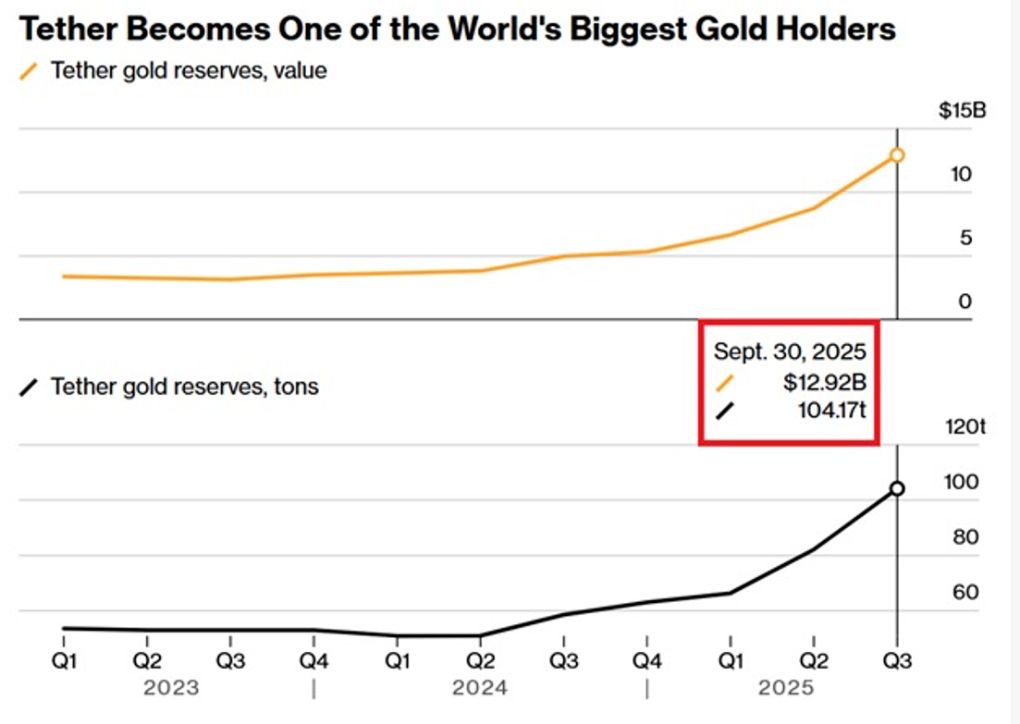The world of cryptocurrency is always buzzing with new developments, and for those deeply invested in the digital gold rush, news about Bitcoin mining profitability is always eagerly anticipated. Recently, a report from the venerable Wall Street institution, JPMorgan, shed some fascinating light on the state of Bitcoin mining, revealing a significant uplift in earnings for miners during July. This isn’t just a fleeting trend; it points to a dynamic shift in the post-halving landscape, offering both insights and opportunities for the dedicated miners navigating this complex industry.
What’s Driving the Surge in Bitcoin Mining Profitability?
JPMorgan’s latest analysis paints a compelling picture for Bitcoin (BTC) miners. According to their findings, July saw an average daily revenue of $57,400 per exahash per second (EH/s). This figure is not just impressive on its own; it marks the highest profitability level observed since the Bitcoin halving event in April 2024. This notable increase signifies a positive turn for an industry that faced significant adjustments following the halving, which cut block rewards in half.
To put this into perspective, let’s look at the numbers:
- July’s Average Daily Revenue: $57,400 per EH/s, marking a significant boost in Bitcoin mining profitability.
- Increase from June: A healthy 4% rise, indicating a positive momentum.
- Post-Halving Peak: This is the highest point reached since the April 2024 halving, showcasing a recovery.
While the surge is encouraging, it’s crucial to acknowledge the broader context. Despite this recent uptick, the current Bitcoin mining profitability is still approximately 43% lower than the revenue figures seen before the halving. This highlights the ongoing challenge for miners to adapt to reduced block rewards and maintain operational efficiency. The market is constantly evolving, and factors like Bitcoin’s price movements, network difficulty, and transaction fees all play a crucial role in determining a miner’s bottom line.
The increase in profitability can be attributed to several intertwined factors. One significant element is often the rise in Bitcoin’s price itself, which directly impacts the fiat value of the block rewards and transaction fees earned. Additionally, an increase in network transaction fees, potentially driven by higher network activity or specific protocol innovations (like Ordinals), can also bolster a miner’s earnings. Furthermore, some miners might be benefiting from improved operational efficiencies, lower energy costs, or the deployment of newer, more powerful mining hardware that offers a better hash rate per watt, all contributing to enhanced Bitcoin mining profitability.
| Average Daily Revenue (per EH/s) | $57,400 | ~ $55,192 | ~ $100,700 |
| Change from Previous Month | +4% | N/A | N/A |
| Comparison to Pre-Halving | -43% | N/A | Baseline |
How Are US-Listed Miners Performing Amidst Increased Bitcoin Mining Profitability?
One of the most compelling takeaways from JPMorgan’s report is the performance of U.S.-listed Bitcoin mining companies. The bank tracks 13 such entities, and an impressive 10 of them managed to outperform Bitcoin (BTC) itself last month. This indicates that these publicly traded mining operations are not just surviving but thriving in the current environment, demonstrating robust operational strategies and potentially better capital management that contributes to their Bitcoin mining profitability.
What does it mean for a mining company to “outperform BTC”? It implies that their stock price or overall financial performance grew at a faster rate than Bitcoin’s price appreciation during the same period. This could be due to several factors:
- Operational Efficiency: Miners with lower electricity costs, efficient cooling systems, and well-maintained hardware can extract more value from their operations.
- Strategic Hedging: Some miners might employ financial strategies to hedge against Bitcoin price volatility, ensuring more stable revenue streams.
- Expansion and Modernization: Companies that have recently upgraded their mining fleets with the latest, most energy-efficient ASICs (Application-Specific Integrated Circuits) would naturally see improved profitability.
- Diversification: Some mining companies are exploring revenue streams beyond just block rewards, such as providing grid services or hosting other operations, which can bolster their overall financial health.
The fact that a majority of tracked U.S.-listed miners are outperforming BTC itself is a strong signal to investors and market observers. It suggests a growing maturity and resilience within the institutionalized segment of the Bitcoin mining industry. This trend could attract further institutional investment, providing these companies with more capital to expand and innovate, further solidifying their position in the competitive landscape of Bitcoin mining profitability.
A visual representation of Bitcoin mining operations and their financial performance. Bitcoin Mining Profitability Surges: Unpacking JPMorgan's July ReportChallenges and Opportunities in Bitcoin Mining Profitability Post-Halving
While the July figures for Bitcoin mining profitability are certainly a cause for optimism, it’s essential to understand the underlying challenges that persist in the post-halving era. The halving event fundamentally altered the economic model for miners by cutting the block reward from 6.25 BTC to 3.125 BTC. This immediate reduction in revenue necessitated a swift adaptation for all miners, large and small.
Key Challenges:
- Reduced Block Rewards: The most obvious challenge is the halved Bitcoin reward, meaning miners need to process twice as many blocks (or rely more heavily on transaction fees) to earn the same amount of BTC.
- Increasing Network Difficulty: As more powerful mining hardware comes online and more participants join the network, the difficulty of mining new blocks tends to increase. This requires more computational power to find a block, further impacting profitability for less efficient operations.
- Energy Costs: Electricity remains the largest operational expense for miners. Fluctuations in energy prices, regulatory changes, and environmental concerns can significantly impact Bitcoin mining profitability.
- Hardware Obsolescence: The rapid pace of technological advancement means that older mining rigs quickly become less competitive, requiring continuous investment in new, more efficient hardware.
Despite these hurdles, opportunities abound for those who can navigate the complexities. The current environment favors:
- Efficiency Champions: Miners who can secure the cheapest renewable energy sources and deploy the most energy-efficient ASICs will naturally have a competitive edge in maintaining Bitcoin mining profitability.
- Transaction Fee Optimizers: As block rewards shrink, the proportion of revenue derived from transaction fees becomes more critical. Miners capable of processing more transactions or those benefiting from high network activity will see increased earnings.
- Strategic Partnerships: Collaborations with energy companies or participation in demand-response programs can provide stable and cost-effective power.
- Innovation in Cooling and Infrastructure: Advanced cooling solutions and robust data center infrastructure can extend the lifespan of hardware and improve operational uptime, contributing positively to overall Bitcoin mining profitability.
Actionable Insights for Aspiring and Current Bitcoin Miners
For anyone looking to enter or stay competitive in the Bitcoin mining space, the JPMorgan report offers valuable lessons. The recent surge in Bitcoin mining profitability post-halving highlights the importance of adaptability and strategic planning. Here are some actionable insights:
1. Prioritize Energy Efficiency: This is non-negotiable. Research and invest in the most energy-efficient mining hardware available. Explore locations with access to cheap, ideally renewable, energy sources. Long-term Bitcoin mining profitability is directly tied to managing power costs effectively.
2. Understand Market Dynamics: Keep a close eye on Bitcoin’s price, network hash rate, and transaction fee trends. These factors collectively determine daily Bitcoin mining profitability. Tools and analytics platforms can provide real-time data to help you make informed decisions.
3. Consider Scalability and Infrastructure: If you’re serious about mining, think beyond a single rig. Plan for robust infrastructure, including proper cooling, ventilation, and reliable internet connectivity. Scalability allows you to expand operations as market conditions become favorable.
4. Explore Mining Pools: For individual miners, joining a reputable mining pool can provide more consistent, albeit smaller, payouts compared to solo mining, where finding a block can be highly sporadic. This helps stabilize your Bitcoin mining profitability.
5. Stay Informed and Adapt: The crypto landscape changes rapidly. Follow industry news, regulatory developments, and technological advancements. Being proactive in adapting your strategy is crucial for long-term success. The ability of US-listed miners to outperform BTC demonstrates the power of well-managed, adaptable operations.
The journey of Bitcoin mining is a marathon, not a sprint. While short-term fluctuations in Bitcoin mining profitability are common, the long-term outlook for efficient and strategically positioned miners remains promising. The recent JPMorgan report serves as a powerful reminder that even after a significant event like the halving, opportunities for growth and substantial earnings continue to emerge for those who are prepared and innovative.
In conclusion, JPMorgan’s report on July’s Bitcoin mining profitability offers a refreshing perspective amidst the post-halving adjustments. The surge to $57,400 per EH/s per day, marking the highest since April’s halving, clearly indicates a resilient and adapting industry. While still below pre-halving peaks, the impressive performance of U.S.-listed miners underscores the importance of operational efficiency, strategic investment, and market adaptability. This positive trend not only validates the efforts of current miners but also provides compelling data for prospective entrants, reinforcing the dynamic and ever-evolving nature of the Bitcoin ecosystem. The future of Bitcoin mining profitability looks bright for those who embrace innovation and efficiency.
Frequently Asked Questions (FAQs)
1. What does JPMorgan’s report say about Bitcoin mining profitability in July?
JPMorgan reported that Bitcoin miners earned an average of $57,400 per EH/s per day in July, marking the highest Bitcoin mining profitability since the April 2024 halving.
2. How does July’s profitability compare to pre-halving levels?
Despite the recent surge, July’s Bitcoin mining profitability is still approximately 43% lower than the daily revenue observed before the April 2024 halving event.
3. Why did U.S.-listed miners outperform Bitcoin itself?
JPMorgan noted that 10 out of 13 U.S.-listed miners it tracks outperformed BTC last month, likely due to factors such as improved operational efficiency, strategic hedging, expansion with new hardware, and diversification of revenue streams.
4. What are the main challenges for Bitcoin miners post-halving?
Key challenges include reduced block rewards, increasing network difficulty, managing fluctuating energy costs, and the rapid obsolescence of older mining hardware, all of which impact Bitcoin mining profitability.
5. What are key strategies for maintaining Bitcoin mining profitability?
Crucial strategies include prioritizing energy efficiency, understanding market dynamics, planning for scalability and robust infrastructure, considering mining pools for consistent payouts, and staying informed to adapt to the evolving crypto landscape.
Did you find this deep dive into Bitcoin mining profitability insightful? Share this article with your friends, fellow crypto enthusiasts, and anyone interested in the fascinating world of digital assets on your social media channels! Your support helps us continue to deliver timely and valuable insights.
To learn more about the latest Bitcoin mining trends, explore our article on key developments shaping Bitcoin’s institutional adoption.
Disclaimer: The information provided is not trading advice, Bitcoinworld.co.in holds no liability for any investments made based on the information provided on this page. We strongly recommend independent research and/or consultation with a qualified professional before making any investment decisions.



